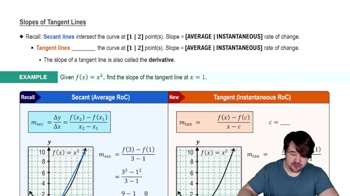Vertical tangent lines
a. Determine the points where the curve x+y³−y=1 has a vertical tangent line (see Exercise 60).
 Verified step by step guidance
Verified step by step guidance Verified video answer for a similar problem:
Verified video answer for a similar problem:



 5:14m
5:14mMaster Finding The Implicit Derivative with a bite sized video explanation from Patrick
Start learning